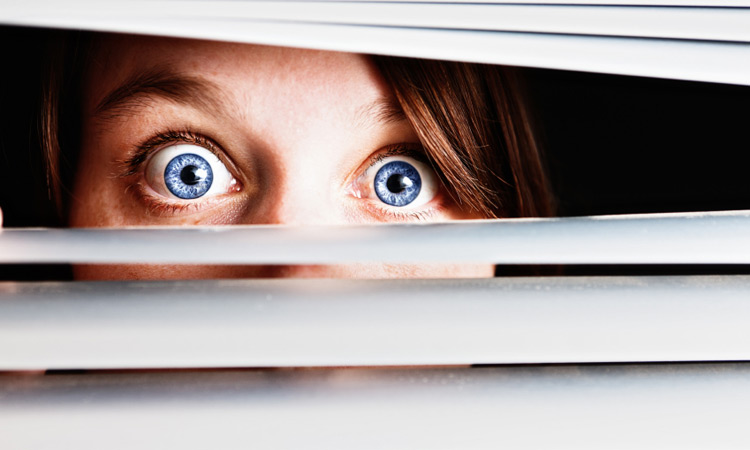If the very thought of having a face-to-face meeting with a co-worker or even a friend, much less attending a party, starts your heart beating unusually fast and your palms sweating, you may be one of the 15 million Americans who suffer from social anxiety disorder; sometimes referred to as SAD and not to be confused with Seasonal Affective Disorder). Social anxiety is usually triggered primarily by situations that require you to make close human contact, or even the mere expectation of having to attend a social event.
People with social anxiety disorder are extremely sensitive to stimulus. In social anxiety sufferers, the amygdala—that region of the brain that triggers the fight or flight response—shows higher level of activation when they perceive “threatening” expressions on the faces of others. What determines a threatening expression is subjective—and may be tied to traumatic events in the sufferer’s life.
Barbara Markway, a psychologist with expertise in social anxiety, and author of three books, most recently Dying of Embarrassment, says that social anxiety can be a combination of biological and environmental factors. But she does see a common theme, “Socially anxious people are usually very hard on themselves, and they need to give themselves a break. It can help them to know that social anxiety disorder is real, and that it’s treatable.”
Not everyone who suffers this anxiety wishes to treat it with medication, either. Fortunately there are other methods to try:
Oxytocin stimulation. A 2010 study called “Oxytocin Attenuates Amygdala Reactivity to Fear in Generalized Social Anxiety Disorder” published in the journal Neuropsychopharmacology, showed that when participants were given a nasal dose of the neuropeptide oxytocin—often referred to as “the love molecule” because the brain produces it to bond with other humans—they suffered fewer symptoms of their anxiety.
However, you don’t need a prescription for oxytocin—you produce it when you hug for more than 20 seconds, make skin-to-skin contact, and spend time in the company of people you love. People with social anxiety might need to “dose” themselves via one of these methods with natural oxytocin before going out into a socially stressful situation.
Real-time neurofeedback. Neurofeedback—when a patient is hooked up to an fMRI (functional Magnetic Resonance Imaging) machine and can see the results as they happen—can help anxiety sufferers to identify abnormalities in their neurology. fMRI Imaging tell clinicians if your amygdala is in a state of hyperreactivity and then teach you to become aware of how your body feels when it is, and how to “down-regulate” amygdala activity using deep breathing, awareness and focused attention to self-calm or self-regulate. While not everyone may have access to this technology, it’s existence offers promise in learning more about treatment of this widespread disorder.
Self-regulation therapies. Cognitive Behavioral Therapy (CBT) is currently the leading method of “self-regulation” treatment for social anxiety disorder. It works by having a trained therapist help a person become aware of their “negative thinking” patterns and make changes. Companies like the Bay Area-based Joyable even offer such treatment via a computer-based appointment with a therapist. Not having to meet with a therapist in person offers relief for many sufferers of social anxiety. The only problem with CBT therapy is that often part of the treatment involves “exposure therapy”—pushing patients to try out the very behaviors they fear, which many people are not ready for.
Psychologist Barbara Markway prefers a method known as “Acceptance and Commitment Therapy” (ACT), which teaches people to accept their feelings as they are. She believes that self-compassion is a crucial first step for those who suffer from social anxiety disorder. She recently wrote a blog post about ACT, which includes such tips as not judging your experience, and acknowledging that feelings exist for the purpose of being felt, and shouldn’t be avoided.
Determine your social speed. You may think that being an introvert or an extrovert is just another bit of psychobabble. But research shows that introverts have larger prefrontal cortexes—that area of the brain associated with deep, ruminative thought and reflection, and “high arousal” nervous systems, which often lead to overstimulation by noise, light and social activity. If you are, in fact, an introvert, knowing that your system is easily over stimulated can help you to arrange your day so that you don’t ever get too much social stimulation, thus easing up on the anxiety level that such activity can potentially create.
Ultimately, says Markway, “You don’t have to get rid of your social anxiety, but rather figure out what’s important in your life, so important that you’ll do it even if you feel anxious.” She recommends this test for people who aren’t certain if they suffer from the disorder.
Click here to find out about Rose’s thoughts on wellbeing and health



